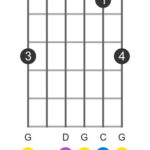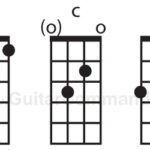Choosing a Fender guitar involves more than just body wood and pickups; the neck shape plays a crucial role in your playing comfort and style. Often referred to as “neck profile” or “back shape,” the contour of the guitar neck’s back significantly impacts how the instrument feels in your hands. While terms like neck width and fingerboard radius also matter, understanding neck shapes is key to finding your ideal Fender.
Before diving into specific Fender neck profiles, it’s vital to understand that neck shape is about personal preference, not sound. The profile doesn’t change the guitar’s tone, but it profoundly affects your playing experience. Whether you’re shredding solos, strumming chords, or exploring jazz harmonies, the “best” neck shape is simply the one that feels most comfortable and natural to you. Fender offers a variety of shapes because players have diverse hand sizes and playing styles, and these profiles cater to those individual needs.
Thinking about a new guitar? Fender’s online guide at FindYour.Fender.com can help you discover the Fender model that matches your sonic and stylistic preferences.
Fender primarily designates its neck profiles with letters: C, U, and V. These letters roughly correspond to the cross-sectional shape of the neck’s back. Variations in depth, or thickness from the fingerboard to the back of the neck, further refine these profiles, leading to descriptions like “thick C shape” or “deep U shape.” Let’s explore these core Fender neck shapes in detail.
C-Shaped Neck Profile: The Modern Standard
The C-shaped neck is arguably the most popular and versatile modern neck profile. Its oval contour provides a comfortable feel that suits a wide range of playing styles and hand sizes. Generally shallower than U and V shapes, the C-shape is known for its accessibility and ease of play.
Many contemporary Fender guitars, particularly Stratocasters, feature a “modern C shape” or “flat oval” neck. This is a slightly flattened iteration of the traditional C, offering a sleek and fast feel favored by many modern players. The Modern C shape is a comfortable all-rounder, making it a great choice for players who switch between genres and techniques.
V-Shaped Neck Profile: Vintage Feel with Two Variations
V-shape necks evoke a vintage vibe and come in two main forms: the “soft V” and the “hard V.” The soft V has a more rounded apex, gradually transitioning into a V shape, while the hard V is more sharply defined.
Players who favor playing with their thumb wrapped over the fretboard often find V-shaped necks particularly comfortable. The V shape nestles into the hand in a way that provides leverage and support for bending and vibrato. Hard V necks offer a more pronounced vintage feel, often found on reissues of older Fender models, appealing to players seeking that classic era experience.
U-Shaped Neck Profile: Chunky and Robust
Characterized by its substantial, rounded profile and high shoulders, the U-shaped neck is the chunkiest of the Fender neck shapes. Deep U-shaped necks, sometimes nicknamed “baseball bat necks,” are particularly thick and full, often found on certain Telecaster models.
U-shaped necks are well-suited for players with larger hands who prefer a substantial grip. They also cater to players who primarily position their thumb on the back or side of the neck, providing ample surface area for comfortable thumb placement. While not as common on modern guitars as C shapes, U-shapes offer a unique feel prized by players seeking a vintage-inspired, robust neck profile.
Fender further refines these basic C, U, and V shapes with period-specific variations, often denoted by a decade or year (e.g., ’50s V shape, ’61 C shape, ’70s C shape). These variations meticulously recreate the subtle nuances of neck profiles from different eras, allowing players to hone in on a very specific vintage feel.
It’s important to distinguish between neck profile designations (C, U, V) and neck width designations (A, B, C, D). From the early 1960s to the early 1970s, Fender used A, B, C, and D to indicate nut width: A (1 ½”), B (1 5/8″), C (1 ¾”), and D (1 7/8″). These width designations, stamped on the neck butt, are separate from the neck profile and refer to the fingerboard width at the nut.


